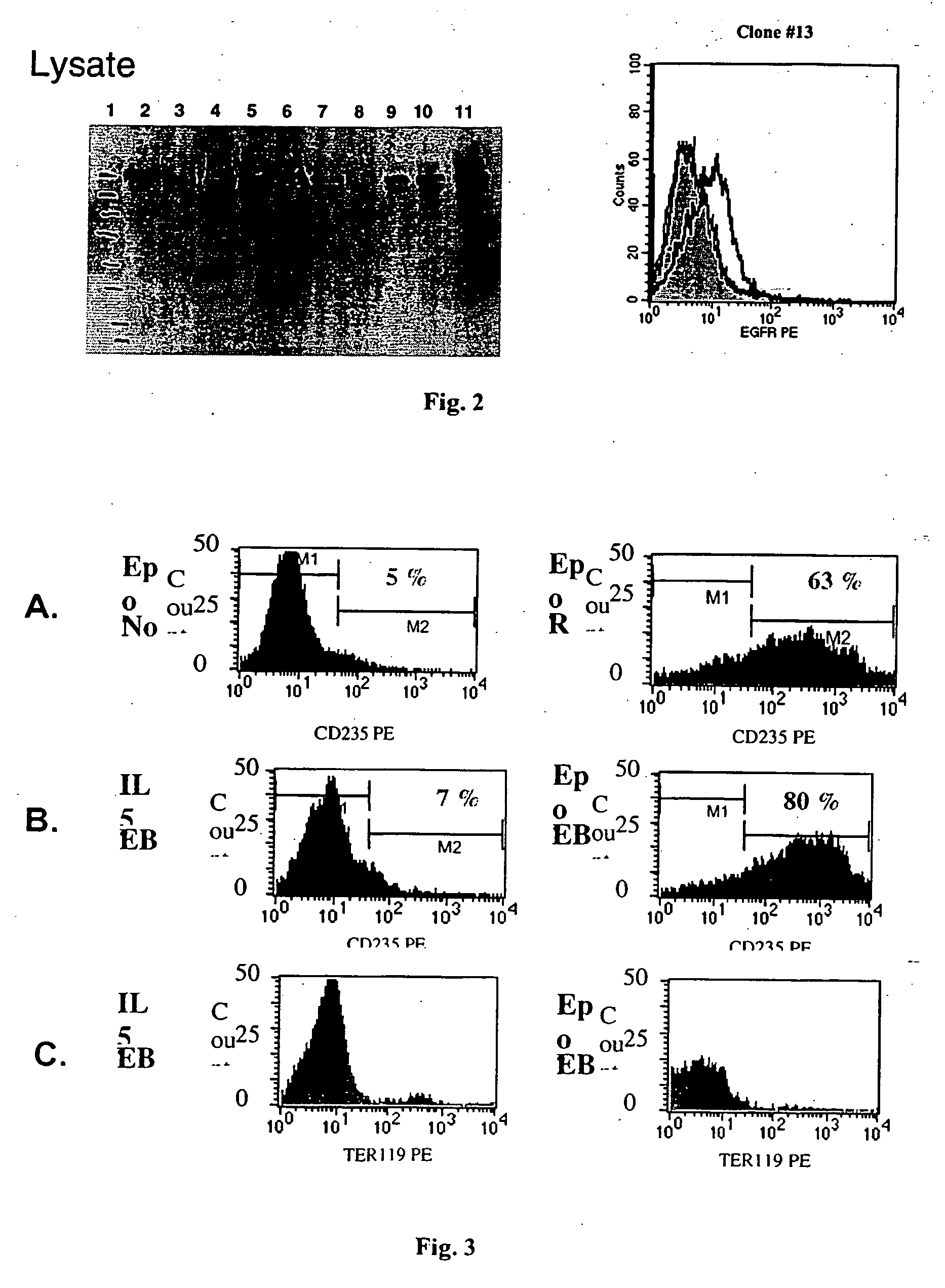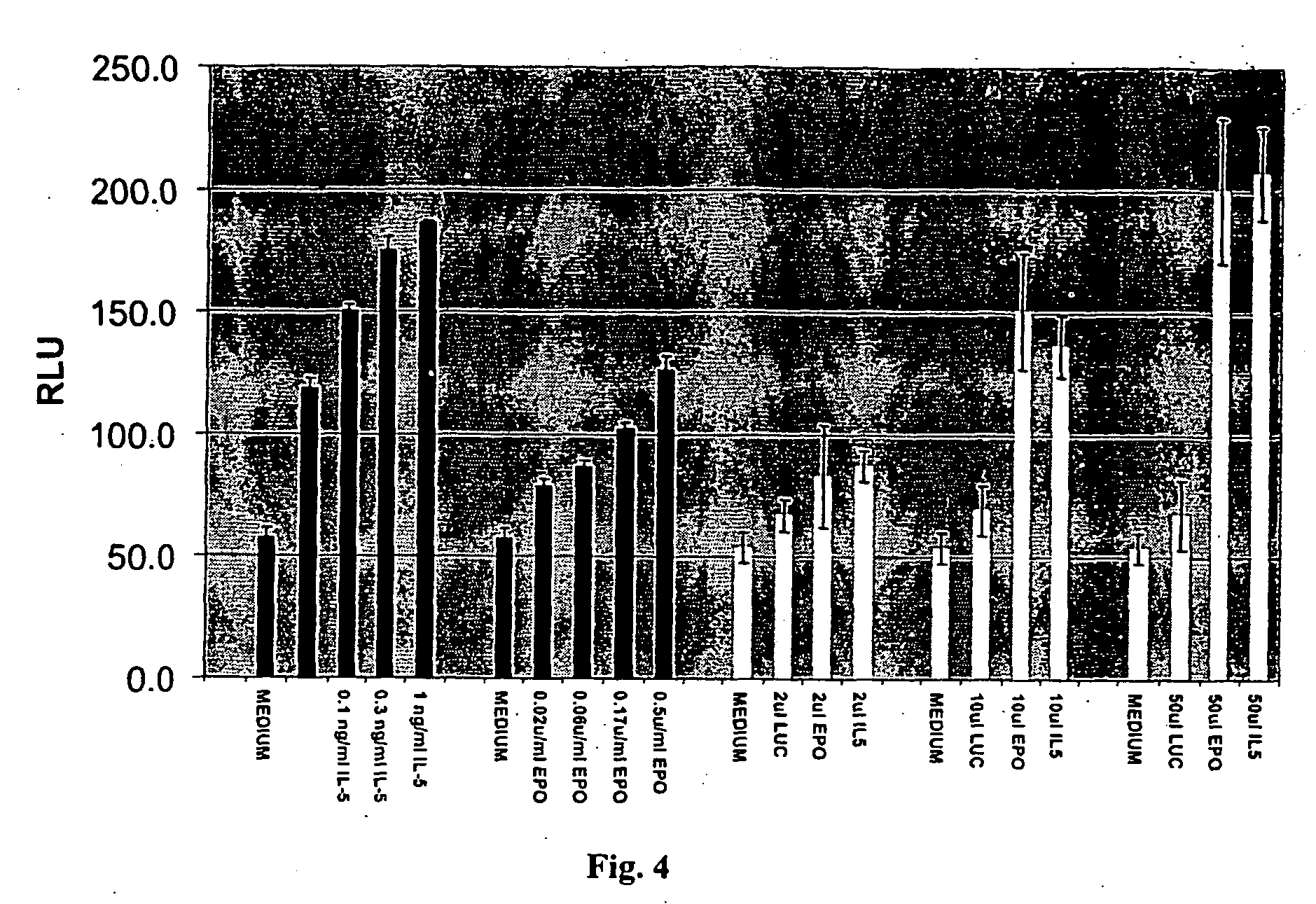Stem cell libraries
a stem cell and library technology, applied in the field of stem cell libraries, can solve the problems of not being able to conduct a large-scale study of gene or protein function, and not being able to define the components of libraries well,
- Summary
- Abstract
- Description
- Claims
- Application Information
AI Technical Summary
Benefits of technology
Problems solved by technology
Method used
Image
Examples
example 1
Designing Targeting Vectors for Insertion into Cells of the Library
[0273] A targeting vector for secreted or other molecules targeting to the ROSA26 locus was constructed as shown in FIG. 1. The PGKneobpA fragment was made by combining PGKneo from New England Biolabs (Beverly, Mass.) and bovine growth hormone poly A (bpA) from BD Biosciences Clontech (Palo Alto, Calif.). The adenovirus major late transcript splicing acceptor (SA) was PCR amplified from adenovirus genomic DNA. TK gene was PCR amplified from a cosmid vector svPHEP from ATCC (Manassas, Va.). The 5′ and 3′ homologous arms were PCR amplified and cloned from genomic DNA according to a public genomic database, e.g., NCBI. As read from the 5′ to 3′ direction, the basic targeting vector without the gene of interest was made by inserting a fragment containing SA, the Gateway cassette (Invitrogen, Carlsbad, Calif.), polyA, and PGKneo between the 5′ and 3′ homologous arms of the ROSA 26 targeting arms.
[0274] A gene of interes...
example 2
Targetability as a Screening Method for Identifying Potent Factors that Inhibit ES Cell Proliferation or Induce Differentiation
[0277] The same homologous arms as above are used for targeting all the secreted molecules to the ROSA 26 locus. The initial number of secreted molecules selected for targeting / expression is about 100-200. The ‘potent’ factors that inhibit ES cell growth or induce differentiation can be discovered by the fact that no targeted clones can be obtained solely for these clones.
example 3
Test Synergistic Effects of Combinations of Secreted Factors in Proliferation and Differentiation
[0278] Different ES clones from the ES cell library were co-cultured in various combinations. A pool of cells was generated that secrete a number of secreted molecules simultaneously. Proliferation / differentiation is a result of combination of signals. A number of pools of ES cells, with each pool containing ES cells expressing up to about 10 different secreted molecules, were generated. The effects of these pools of secreted factors on differentiation of ES cells (see examples that follow) or proliferation of other cell types was then tested.
PUM
| Property | Measurement | Unit |
|---|---|---|
| concentration | aaaaa | aaaaa |
| length | aaaaa | aaaaa |
| nucleic acid | aaaaa | aaaaa |
Abstract
Description
Claims
Application Information
 Login to View More
Login to View More - R&D
- Intellectual Property
- Life Sciences
- Materials
- Tech Scout
- Unparalleled Data Quality
- Higher Quality Content
- 60% Fewer Hallucinations
Browse by: Latest US Patents, China's latest patents, Technical Efficacy Thesaurus, Application Domain, Technology Topic, Popular Technical Reports.
© 2025 PatSnap. All rights reserved.Legal|Privacy policy|Modern Slavery Act Transparency Statement|Sitemap|About US| Contact US: help@patsnap.com



